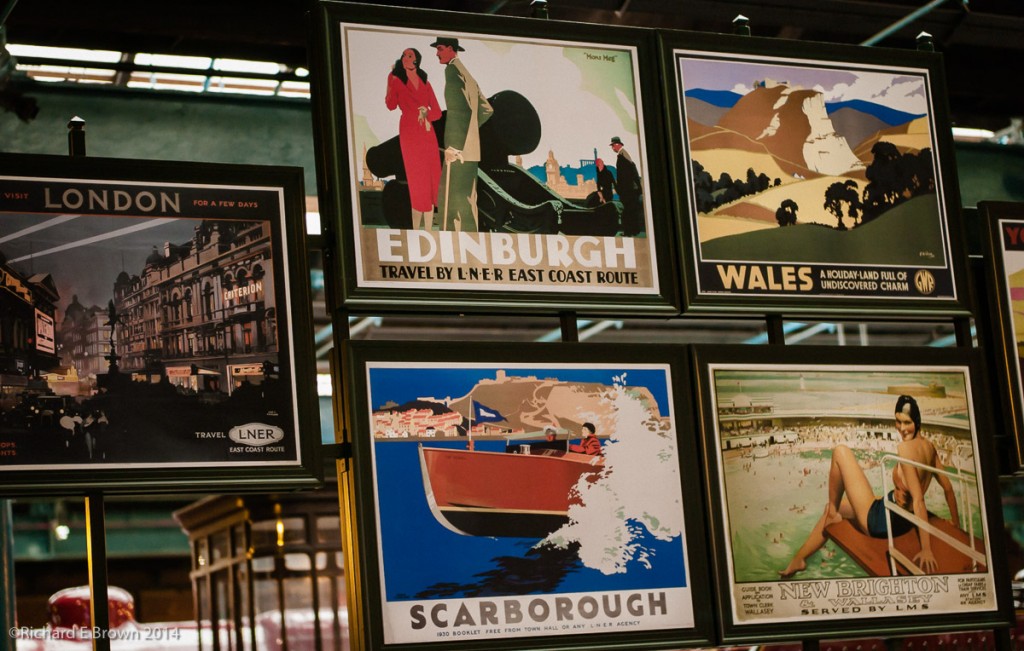
Leica M8
Leica 50mm f/1.4 Summilux-M
50mm, 1/45 Sec at f/1.4, ISO640
Post Processed in Adobe Lightroom V5.3
On a MacBook Pro, OS-X 10.9.1
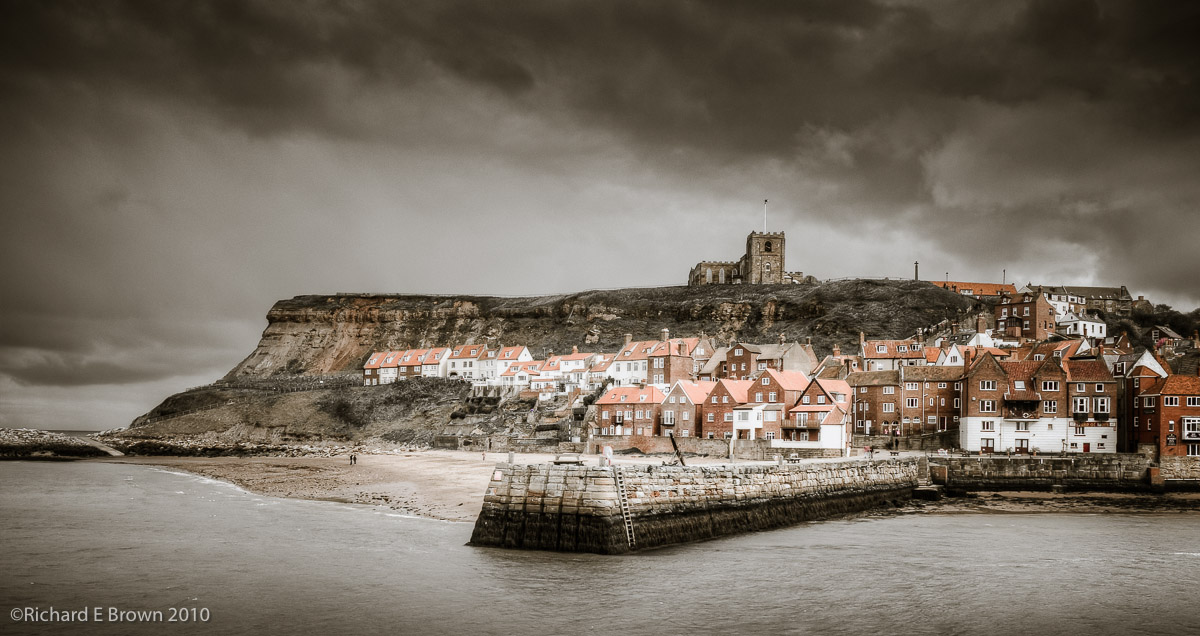
Family, Photography and other misc news
While in North Yorkshire we went for a few walks, including a forest walk hoping to see some deer.
Despite carrying a big heavy DSLR and long lens together with a Gitzo Series 5 tripod I came back with no shots except for trees!
We were staying in a small wooden cabin in the wood and while there some wildlife did come to visit.
A grey Squirrel did come to visit most mornings as on two occasions did a woodpecker. These were taken through the cabin window.

Fuji’s first attempt at a professional Mirrorless camera was the X-Pro1, a good attempt, with nice body and controls, hybrid optical/EVF viewfinder. There was a lot to like, but let down somewhat by the autofocus and what some consider the limitations of the X-Trans sensor.
Today they announce the X-T1, a camera that looks like they have been paying close attention to what Olympus have been doing.
The new X-T1 has a lot of good features including weather sealing and what promises to be the best EVF yet, well spec’ed and a claimed 54 frames per second with no lost frames when the light levels drop (are you listening Sony). Some Mirrorless cameras with EVF’s drop to 10-20 fps making it impossible to capture fast moving action and the decisive moment.
In case your wondering an EVF needs to reach about 240 fps to match a optical viewfinder. I think we are about three years away, but once there I expect most low end SLR’s to drop the expensive mirror and go with the cheaper to manufacture EVF.
Check out Chris’s Blog for more info and thoughts

Last week we had a few days a way in North Yorkshire. While there we had a day in York and visited the National Railway Museum. Last year we watched a program about the last remaining A4 Class trains from Canada, the Dominion of Canada and the one from America the Dwight D Eisenhower, and wanted to see these two together with their sister the Mallard and holder of the train land speed record for steam powered locomotives.
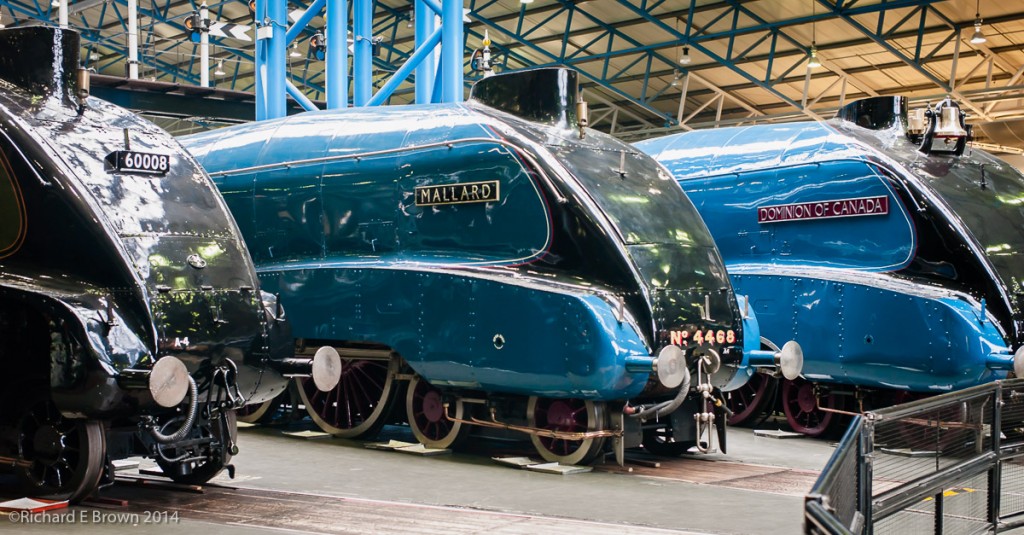
For two weeks only back in July on the 75th anniversary all six remaining A4 Class trains were together. This year I believe the Canadian and American A4’s go home so it was a once in a life time experience to these two.

The museum is a great place to visit with lots of photo opportunities. Take either a flash gun for fill in flash or a mono, or tripod as the light levels are quite low.
I was travelling light with just a Leica M8 and a 50mm Summilux and a 35mm Summicron so most of these are shot wide open at shutter speeds as low as 1/15 second.
One advantage of shooting with mirror less cameras is that you can use slower shutter speeds as there is no mirror flapping around to cause camera shake.
I usually shoot a lot of studio work during the year but this year was very light, though I did do a fair amount of commercial and location portraits for customers but I cannot show these here on this site.
One thing I did do at the end of the year was some location portraiture, art nude and some boudoir work.

You are photographing an event, you catch a small moment in time.
Technically it’s not quite there but you include in the edits you send to the customer.
They love it, feel it captures the whole evening and it’s their most treasured image.
Another photographer looks at this final image and points out what a bad job you made of the photograph.
It’s highlights are blown – over exposed.
It’s subject is not quite in focus.
It’s suffering from camera shake.
You used too low an ISO, and it was shot wide open so the depth of field is too limited for the subject.
Basically he is saying its a bad image and shows you to be a bad photographer.
Who is right? Should the customer, have been shown a photo that they artistically love but is technically poor and may make some people think you are an inferior photographer?
Something to think about.
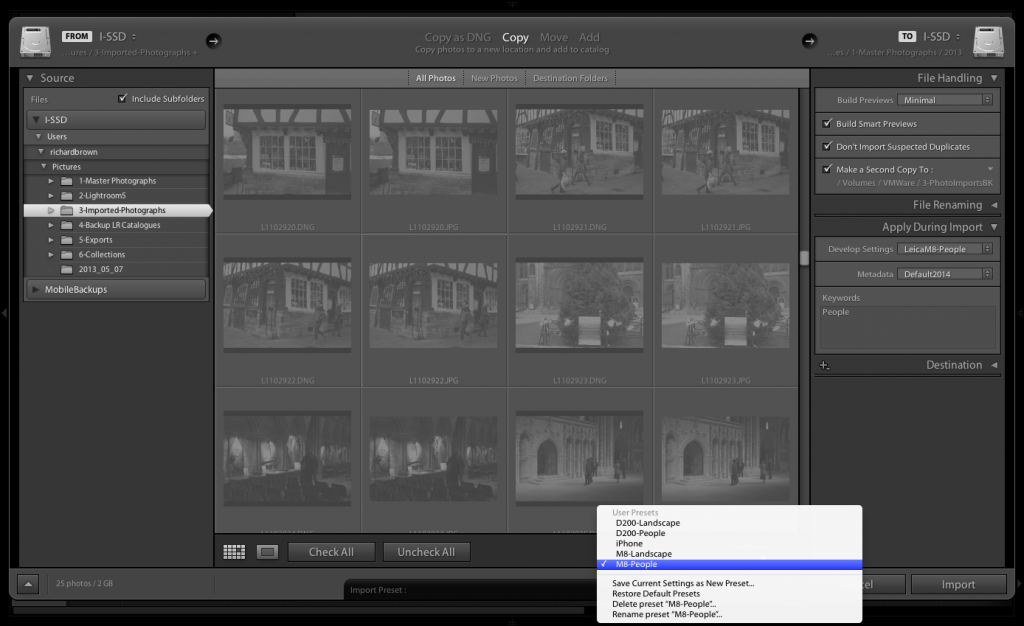
Once you have imported your photographs into a DAM (Digital Asset Management) Package, then to get the most from your photographs, especially if your a professional photographer who may need to lay there hands on a particular image months or even years later there are a number of key tasks to perform.
First is meta data, simple things like location files were shot, copyright information, basic key wording etc.
Then there is developing the files. The Adobe Camera RAW engine using process2012 is very powerful but the import process does tend to flatten your images resulting in RAW files that will not look anything like as good as out of camera jpegs.
I have a number presets to speed things up. First common meta data presents with my copyright information and some location presets for locations where I shoot a lot.
Then there are develop settings, some are camera specific, and also apply basic sharpening based on if they are Landscapes or People focused.
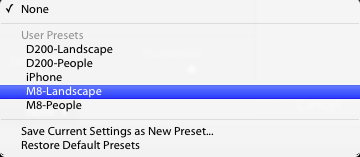
The key to really speeding things up though is to set these up with your import presets, thus as you can see above, when I import files from my Nikon D200, if the pictures are mainly landscapes I choose the D200-Landscape preset. This preset apples my basic landscape metadata and copyright information, it sets a backup hard drive destination so the files get backed up to a second disk during the import. It applies the develop preset I have configured for my Nikon D200’s and does some basic import sharpening optimised for Landscapes. It then ups the contrast and vibrance reduces the saturation slightly and brightens the shadows.
The Leica M8 presets similarly tweak contrast reduces red channel saturation and applies a tone curve.
Using these imports I can get to a position quickly where I just need to add some detail location information, final specific keywords, white balance and a slight tweak to the develop settings.

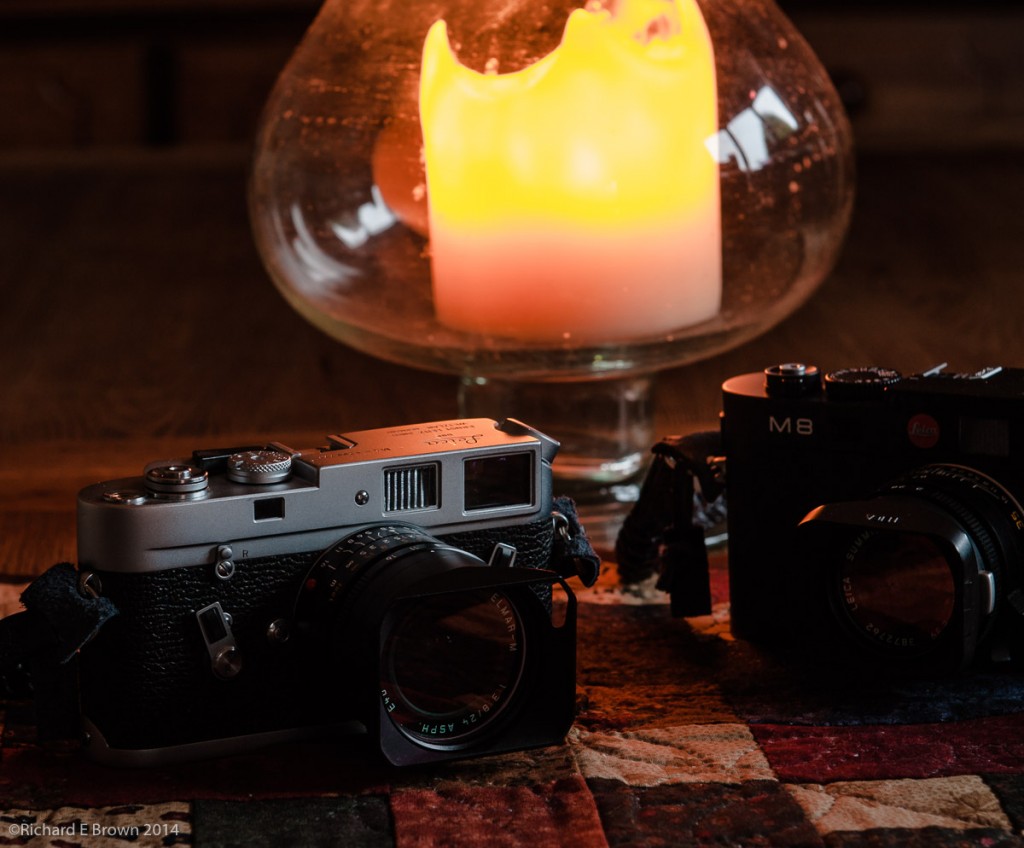 Yes it was wet and cold outside. I did not fancy getting the studio gear out but I still wanted to take some photographs. What is a photographer to do. Well that left either taking photographs of my wife indoors, which she suffers enough of already or setting up a quick still life.
Yes it was wet and cold outside. I did not fancy getting the studio gear out but I still wanted to take some photographs. What is a photographer to do. Well that left either taking photographs of my wife indoors, which she suffers enough of already or setting up a quick still life.
Lit by the none existent sun and the candle you see in the picture, the exposure was 5 seconds at f/8, ISO100.
Street Photography was a major project for me this year, I tried to visit up the Bailgate area of Lincoln once a month and photograph the people of the area. I very rarely shot with anything else except my Leica M4 or M8, but occasionally I took the a SLR or my Medium Format Hasselblad. I also had a few sessions with my little Nikon V1 with a fixed 10mm lens, it worked very well as it focuses fast and can be used with one hand quickly.
I am still in two minds what to do with the V1, I like the results but its short comings drive me mad. I may keep it until the Ricoh GR drops in place and use that as my compact. I am also tempted with the Panasonic GX-7 which would make a great replacement, again though I would wait until its replacement is released then try and pick it up cheap.
Street Photography is something that is very challenging, and your choice of camera can have a big affect on how people react to you. Interestingly I found that people react less to the Leica and the Hasselblad and most to the digital SLR. The Hasselblad was a real surprise, I think its the fact that I use a waist level finder with it and so as I don’t raise it to my face people don’t know I am taking pictures.
If you are after finding out how many shutter activations your Leica M8/M8.2 has then you can check the exinf information within the DNG, I am told it is buried in there somewhere. Not very useful if your checking out an M8 in a shop and want to know.
There is a way to find out but it involves getting into the Leica Service Menu. To do this you have to follow the following steps:
Scroll down to body debug data, press set then scroll down to NUMEXPOSURES.
My M8 now has 5240 and according to Lightroom 2643 of these are mine, so in the last year I have put on half the activations its had since it was made.
Once in this menu you can also get at other interesting options. The M8 uses Compressed RAW files, they are compressed from 14 bit to 8 bit and its not lossless. To get lossless compression you have to have an M9 or M240. Once you have been in the service menu another option is available, not just jpg or DNG but also jpg+raw, this produces a real 14 bit raw file.
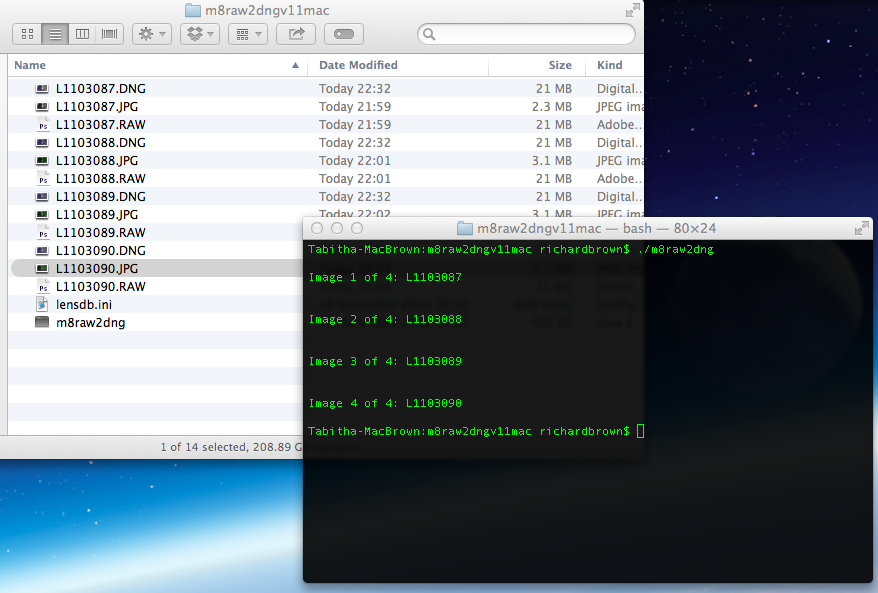 The downside of this is few programs can read it, you have to process it and create a packaged 14 bit dng; a program like m8raw2dng and a quick trip to the command line will soon create one. Once created this can be imported into your favourite raw processor. The other downside is that you lose the colour profile and editing is far harder. So while you get an image with better image quality but the time taken to edit the file increases enormously.
The downside of this is few programs can read it, you have to process it and create a packaged 14 bit dng; a program like m8raw2dng and a quick trip to the command line will soon create one. Once created this can be imported into your favourite raw processor. The other downside is that you lose the colour profile and editing is far harder. So while you get an image with better image quality but the time taken to edit the file increases enormously.
I may blog about it some more, if I get the hang of it.